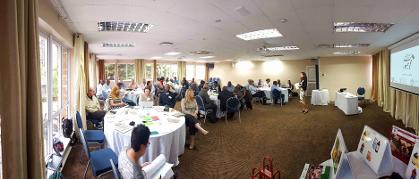Goat Innovation Platform
Mdukatshani and Heifer as part of the Goat Agribusiness Project are coordinating a Goat Innovation Platform. Some of the thinking around this process and questions starting to emerge are captured here.
The first innovation platform was held in Durban on the 26th April 2016.
Below are presentations and resources from the meeting.
Presentations made at the first innovation platform meeting
Research on Goats?
The goat was the first animal domesticated to produce for the consumer. The geographic occurrence of this phenomenon, combined with the location of the cradle of the first known civilisations (Mesopotamia), contributed to the direct connection of the goat to all phases of life of the people who created and developed civilisation in the area now known as the Middle East. The presence of the goat in all sectors of ancient societies has continued to the present, particularly in religion, economy, nutrition and tradition. The goat is clearly not synonymous with under-development and poverty. Improving access to scientific information through research and extension services must benefit the goat industries of developing regions where the demand is increasing due to growing human populations and their associated needs.
Although many decision- and policy-makers, and heads of international organisations still appear to underestimate the capital role the goat has played since the early times of humanity, they are now faced with the impressive results of basic investigations, along with meaningful surveys, applied experimental data and breakthrough information that show this species to be a reference model for other more advanced farm livestock sectors. A point that should be made here is that much of the research conducted prior to the 1980s (both basic and applied), was unfortunately mainly, if not only, published in obscure non-referenced journals and bulletins, which the scientific leadership of the time did not consider as serious reading. In fact, the goat, together with the camel and the buffalo, were relegated to what was euphemistically declared to be of ‘Third-World importance only’. J. Boyazoglu et al. / Small Ruminant Research 60 (2005) 13–23
The questions so far
Initial questions/topics for consideration
An understanding of goat numbers in commercial and communal herds
Better understanding of goats being imported into the country
Better understanding of goats moving around the country between provinces
Productivity norms that could be expected from the SA goat herd
Establishment and promoting of value chains
Funding provided for real research
Department Agriculture questions
1. How many goat breeds do we have out there, and which are particularly found in the KZN province
2. What does each produce
3. How are they cared for
4. What different goat breeds does one need to mix to come up with these special breeds
5. Which of these are in demand in terms of the markets for possible export purposes
6. What type of environment do they each require
7. What do they feed on
8. What basic skills are required if any, to assist potential breeders to become commercial breeders 9. The basic business and science knowledge required for a sustainable and economic focused farming.










